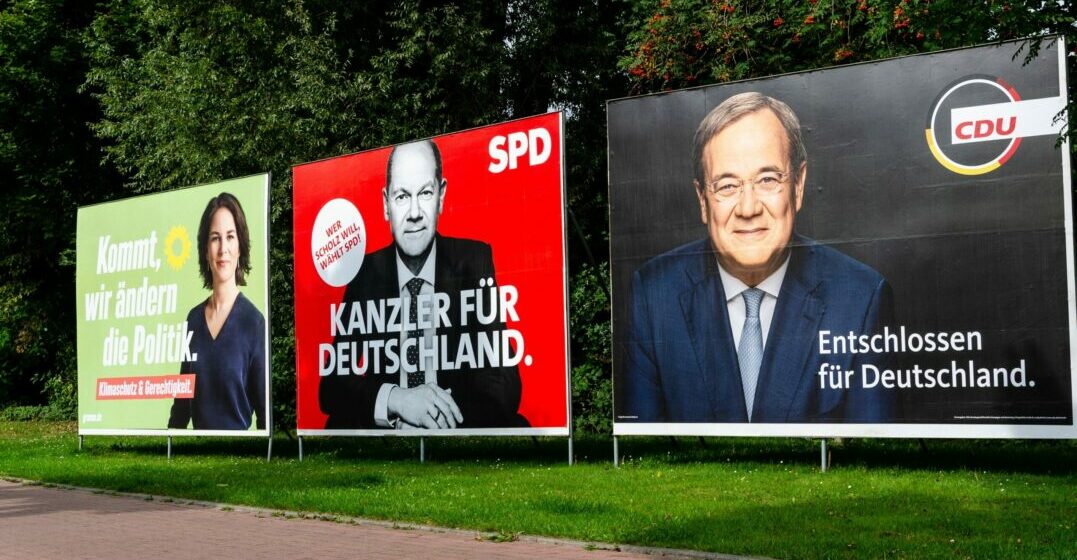German political parties at a glance
Published on May 12, 2022 / Updated on January 9, 2024
German political parties represent the people’s interests. They are at the heart of the German political system. There are a plethora of political parties in Germany, and each of them has clearly defined values and goals. Still, shifting coalitions and adjustments to new questions of political importance can make it hard to understand who these parties are and what they stand for. In this article, we’ve broken it all down for you so you can understand the basics of each party.
There are countless German political parties. Only seven of them are currently represented in the Bundestag, though and play a crucial part in shaping the political landscape of Germany:
With all these political parties you might ask yourself: What political party is actually in power in Germany? The answer is: not a single one. It is a characteristic of the German political system that usually even the party with the most votes will need a coalition partner to rule. As of 2022, the government coalition consists of SPD, Die Grünen and FDP, while CDU/CSU, Die Linke and AfD form the parliamentary opposition. Let’s look at who these German political parties are and what they stand for.
The Social Democratic Party is not only the oldest of the German political parties, but also the biggest political party in Germany in 2022. The SPD in today’s Germany goes back to the first decades of the 20th century when it had close ties to leftist movements and communists. The party quickly became a Volkspartei (people’s party), recruiting its voters mainly from the working classes in the big industria centers and trade unions. The SPD in Germany is classically associated with the fight for social justice, embracing topics such as minimum wage, pensions and taxes to the benefit of low-income earners. The color of the SPD is red. Preferred coalition partners are the Greens (die Grünen).
The CDU in Germany is the second-biggest party in Germany after the SPD. Together with the CSU, they stand for very similar values. Both carry their Christian background in their name: Christlich Demokratische Union Deutschlands (CDU) and Christlich-Soziale Union in Bayern (CSU). The sister parties represent small and medium-sized business owners working to reduce taxes on high incomes, recruiting its voters mostly from rural areas. Angela Merkel, the first female chancellor of Germany, is only one of the most influential politicians of CDU in Germany. The color of CDU and CSU is black. The preferred coalition partner is the FDP.
Die Grünen in Germany are an alliance of Die Grünen (The Greens) and Bündnis 90 (Alliance 90) from former West and East Germany respectively. Their main concerns are environmental and social issues. They had a strong voter base in universities, the students of the beginnings now belonging to a well-educated, urban middle class. The color of Alliance 90/The Greens is — as you might have guessed — green.
One of the smaller German political parties is also the party that’s participated in the government for the longest time – but always in the role of coalition partner. FDP stands for Freie Demokratische Partei which translates to Free Democratic Party. The FDP in Germany stands for a liberal market economy and simplifying the tax system. Their voters are mainly self-employed businessmen and highly educated professionals. The color of the FDP is yellow.
The Alternative für Deutschland (AfD) developed quickly from a protest party into a right-wing party opposing the European Union and working to stop immigration. With ties to far-right groups, this opposition party holds a considerable number of seats in the Bundestag and is under surveillance by the Federal Office for the Protection of the Constitution (BfV). The color of the AfD is blue.
Founded in 2007 as a split-off of the SPD, the Left Party has its origins in the SED (Sozialistische Einheitspartei Deutschlands) which succeeded the PDS (Partei des Demokratischen Sozialismus) in East Germany. The party still has a strong base of voters in the eastern states of Germany. It shares concern for social justice with the SPD but is far left of center. While Die Linke has never participated in a government, it has been in the Bundestag since 2005.
Moving to Germany is not all about learning the German language, bureaucracy and culture. Knowing the German political parties, their platforms and their voters will also help you navigate sometimes difficult conversations on political topics. To gain further inside, follow the news on SPD, CDU/CSU, Die Grünen, FDP, AfD and Die Linke.
